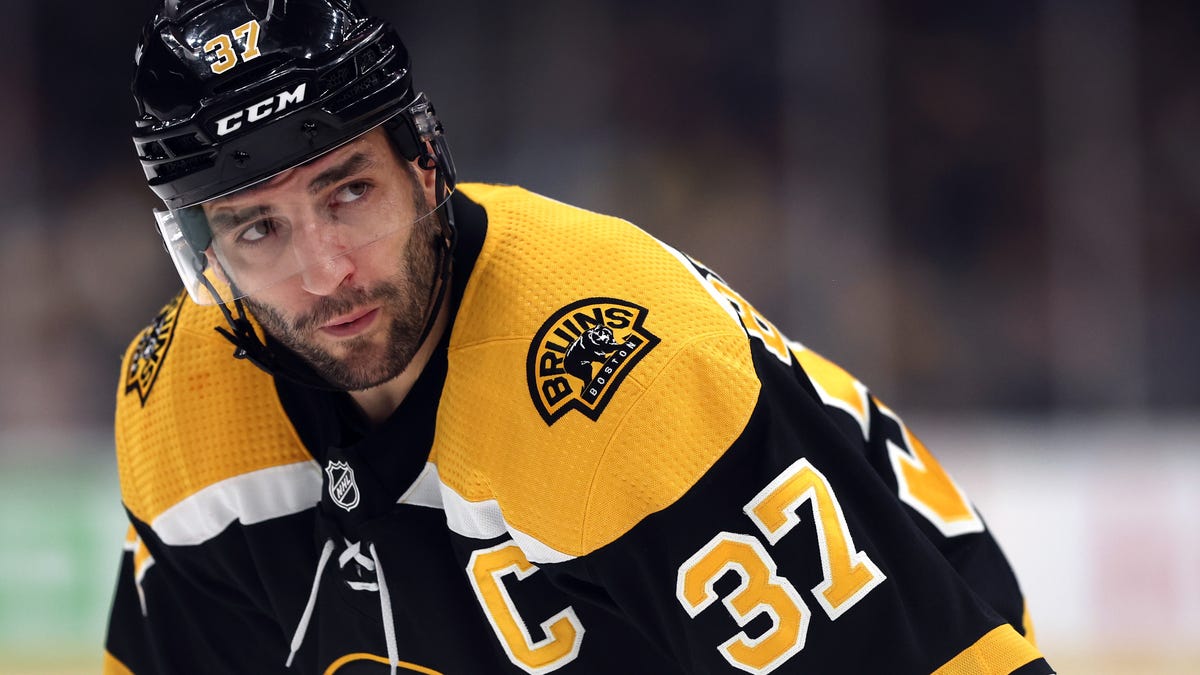At least know why you’re voting for Patrice Bergeron for Selke

It’s an unwritten law in the NHL. If Patrice Bergeron is upright, averagely ambulatory, and plays more than 50 games, he’s going to win the Selke Trophy for the league’s best defensive forward. And it’s not easy to argue against this, as Bergeron has been the league’s smartest player for a decade or more now. But once a player is anointed the best defensive forward, and is thought of as a checking dynamo who also scores, then it’s hard for them to lose that. There isn’t much Bergeron could do now to not be seen as the best checking forward in the league who also happens to pour in a ton of points (and scoring has always played a role in this award, which is pretty nonsensical). Just about the only thing he could do is retire, which has been rumored to be an option after this season.
But Bergeron’s career has evolved. For most of his career, Bergeron was a marvel, starting an overwhelming amount of his shifts in the defensive or neutral zone and then turning the play over to the offensive zone. You could put Bergeron in any situation, and any Bruins coach knew that he would get the puck in the right end of the ice. This is back when the Bruins had talented, more one-dimensional centers like Marc Savard or David Krejci that Bergeron allowed to concentrate more on, or just on, scoring. Bergeron was the Swiss Army knife.
For the first nine seasons of Bergeron’s career, his offensive zone start percentage for his shifts were 40.6, 41.1, 47.0, 41.3, 44.1, 36.8, 39.9, 38.4, and 40.1 This role is pretty much the “dungeon shifts,” something you’d saddle a third or fourth-line center with and their only task would be to harass the other team’s best center and make sure they didn’t score. If that player ever crossed the red line, it was worthy of trumpets and rose petals. The Bruins asked Bergeron to do that, and then also produce at least like a high-end second-line center. Which he did, because he’s a first-ballot Hall of Famer.
However, in the last six seasons, as Krejci’s powers waned just a bit, Bergeron has been used as a genuine, first-line center. His offensive zone start percentage in the past six campaigns hasn’t dipped below 56 percent, and four times it’s been above 60 percent, as it is this season. His main task has been to combine with Brad Marchand and David Pastrnak to kick a hole in the world through scoring.
Now, because this is still Bergeron, and now he’s mostly starting his shifts in the offensive zone, the puck stays there. His metrics are utterly dominant. His Corsi-share, the amount of attempts on net the Bruins get while he’s on the ice vs. the amount they give up, is a league leading 66.0 percent. That leads by three full percentage points! His expected-goals percentage also leads the league 69.6. His Corsi-against per 60 minutes of even-strength time is the lowest in the league too, as is his xGA per 60.
So if the argument is that it doesn’t matter where he starts, he prevents attempts and chances against the Bruins net, and thus that makes him a great defensive player, that’s fine. The name of the game is to prevent goals and score them, and you do that by preventing chances and creating them, and Bergeron does that. But he doesn’t have to do that by playing nearly as much defense as he used to. Charlie Coyle is asked to take the dungeon shifts for the most part now.
That doesn’t mean that Bergeron is never in the defensive zone these days. He still takes 20 defensive zone draws per 60. But he also takes 32 faceoffs in the offensive zone per game, which leads the league. HIs defense is based on just not being in his own zone at all, which is a valuable skill. Does it make him a great defensive player at this point though? He could probably still do it if the Bs needed, but that’s not what he’s doing now.
If the Selke is truly about rewarding forwards who play defense, may we present Florida’s Mason Marchmant, who starts less than half of his shifts in the offensive zone, and ranks 2nd and 4th in Corsi and xGA against. Or Minnesota’s Marcus Foligno, who starts 45 percent of his shifts in the o-zone and yet is third in xGA against. They’re playing defense far more, and are asked to do so far more, than Bergeron.
Bergeron is going to win the Selke, and the rumors that he might retire will only fuel that as hockey writers want to give him a sendoff. It’s a defensible choice, but most voters won’t know why. They’ll just see that Bergeron is winning a ton of faceoffs, scoring, and playing on the PK and think it’s the normal Bergeron season. It hasn’t been that season in a while. If the idea of the Selke Trophy is to highlight someone doing the work we don’t notice, then Bergeron isn’t it, as great as he is.
For all the latest Sports News Click Here

